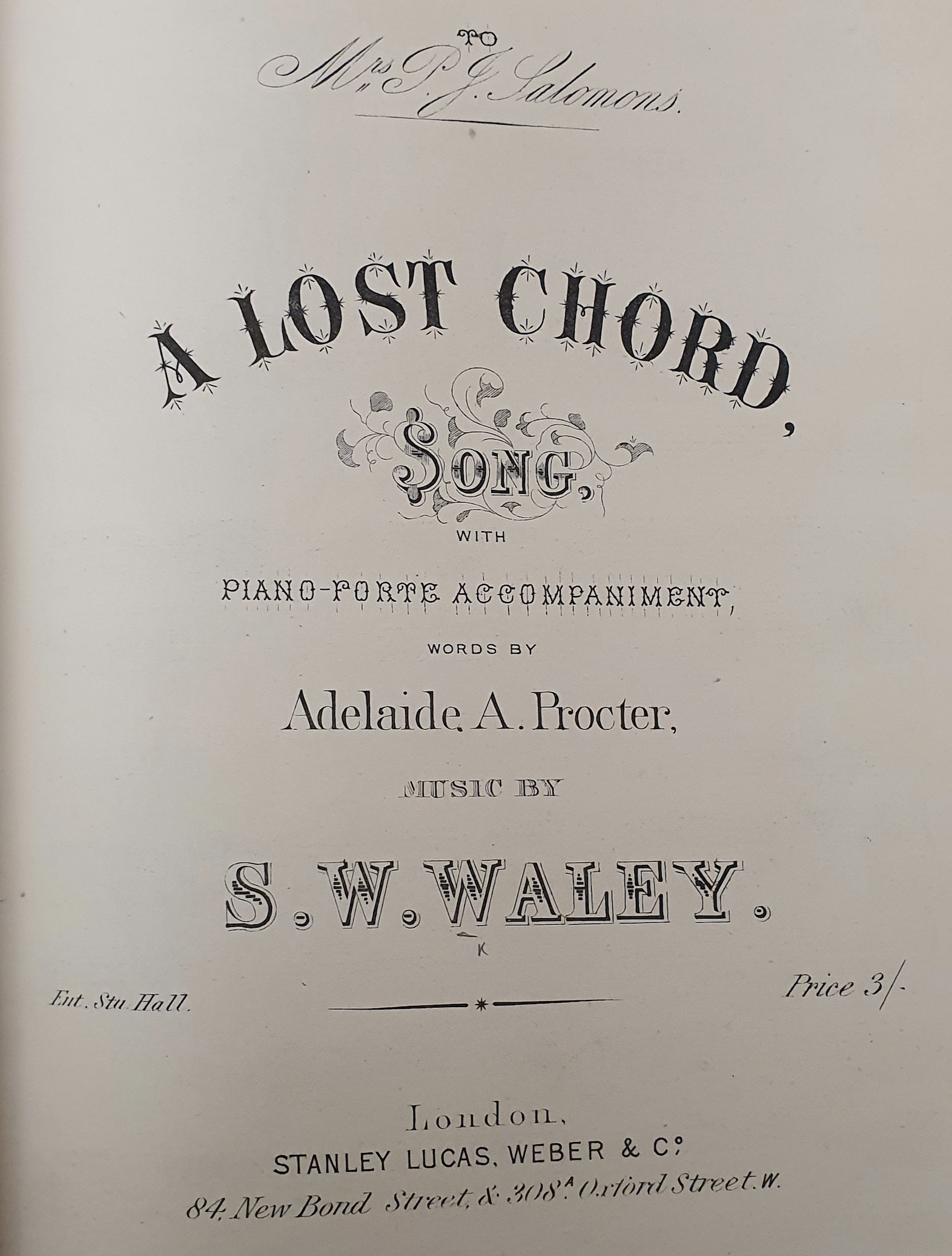A Lost Chord
Poem by Adelaide Anne Procter (1825-1864)
First published in The English Woman's Journal (March 1860, p.36)
Song settings by Sir Arthur Sullivan (1877) and others).
This project was suggested by Kurt Gänzl.
Click the blue links in the spreadsheet below for recordings.
Obvious errors in the published music have been corrected, but word changes adopted by the composers have not been changed.
For information about the poem and changes to the poem made by the composers, follow this link.
Poem by Adelaide Anne Procter (1825-1864)
First published in The English Woman's Journal (March 1860, p.36)
Song settings by Sir Arthur Sullivan (1877) and others).
This project was suggested by Kurt Gänzl.
Click the blue links in the spreadsheet below for recordings.
Obvious errors in the published music have been corrected, but word changes adopted by the composers have not been changed.
For information about the poem and changes to the poem made by the composers, follow this link.
No sheet music has yet been found for the following settings:
William Pinney (1864)
William Borrow (1864)
Arthur Cleveland Wigan (1878) - possibly unpublished
Enos Bacon (c.1910)
This project concentrates on settings made between 1860 and about 1910.
Modern settings include that of Gwyneth Walker for SATB choir.
William Pinney (1864)
William Borrow (1864)
Arthur Cleveland Wigan (1878) - possibly unpublished
Enos Bacon (c.1910)
This project concentrates on settings made between 1860 and about 1910.
Modern settings include that of Gwyneth Walker for SATB choir.
Settings were made by the following composers:
| First appearance of setting | Name of composer - links to recordings in blue | Years of birth/death |
|---|---|---|
| 1861 | William (Wilhelm) Herz | 1828-1879 |
| 1864 | William Pinney | 1845-1906 |
| 1864 | Joseph Robinson |
1816-1898 |
| 1864 | Rev. William Borrow | 1831-1902 |
| 1865 | Sir George Alexander Macfarren | 1813-1887 |
| 1867 c. | Simon W. Waley | 1827-1875 |
| 1870 | Anne Hall (Pupil of Thomas Wrighton 1816-1880) | unknown |
| 1874 c. | "Giulio Montana" (possibly a pseudonym of William Marshall Hutchison — see below) |
see William Hutchison |
| 1875 | John Blockley |
1801-1882 |
| 1877 | Sir Arthur Sullivan | 1842-1900 |
| 1878 c. | William Marshall Hutchison — a.k.a. "Julian Mount" a.k.a. "Josef Meissler", possibly a.k.a. "Giulio Montana" |
1854-1933 |
| 1878 c. | Arthur Cleveland Wigan (possible untraced setting) | 1850-1938 |
| 1878 c. | "Rita" (Eliza Margaret Jane Humphreys/Booth née Gollan) (an arrangement of themes by Beethoven from Piano Sonata no.4 in Eb op.7, 2nd movement, and Piano Sonata no.10 in G op.14, 2nd movement |
1815-1901 |
| 1879 | Frank Romer | 1810-1889 |
| 1880 c. | Anonymous — another arrangement of themes by Beethoven (from the Piano Trio in Bb op.97 (Archduke), 3rd mov.) |
unknown |
| 1880 c. | Carl Bernstein | possibly c.1835-1899 |
| 1883 | Alfred James Caldicott (S.A.T.B. part song) | 1842-1897 |
| 1884 | Annie Elizabeth Armstrong | 1853-1898 |
| 1885 c. | Hubert Watkyn | unknown |
| 1894 | Ezra Read | 1862-1922 |
| 1910 c. | Enos Bacon | 1874-1951 |
Further recordings are in preparation.
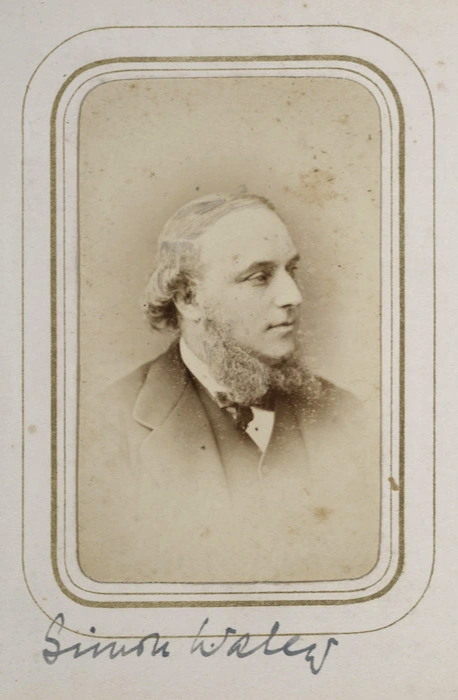
Simon W. Waley (1827-1875) made his setting of The Lost Chord in about 1867. The image of him was taken in about 1865. His full name was Simon Waley Waley. He had evidently been listening to music by the ever-popular Mendelssohn, and Waley's Lost Chord bears a striking resemblance in style to Mendelssohn's song Auf Flügeln des Gesanges (On Wings of Song). Waley was an extremely talented amateur composer, who wrote not only songs but also chamber music and music for synagogue services which is still occasionally sung, in particular his setting of Adon Olam. His Lost Chord is different to most of the other settings, it's not accompanied by imitation organ chords, but has a flowing arpeggio movement, and though there are some moments where the word setting is not ideal, it is nevertheless one of the best alternatives to Sullivan, and really deserves to be performed.
John Blockley (1801-1882) [below] was a publisher of music as well as a composer. One of his best-known songs is The Arab's Farewell to his Steed. The image that appeared on the cover of his Lost Chord seems to be a portrait of Blockley himself. The cover of his song Leaning On Thee seems to show him again, this time as a model for Jesus. He was about 74 years old when he composed The Lost Chord, and is certainly the earliest-born composer to have made a setting. It appeared two years before Sullivan's, and specifies organ accompaniment. The recording is therefore with organ. Blockley set another of Adelaide Procter's poems to music, "Misere Domine" subtitled "The Storm".
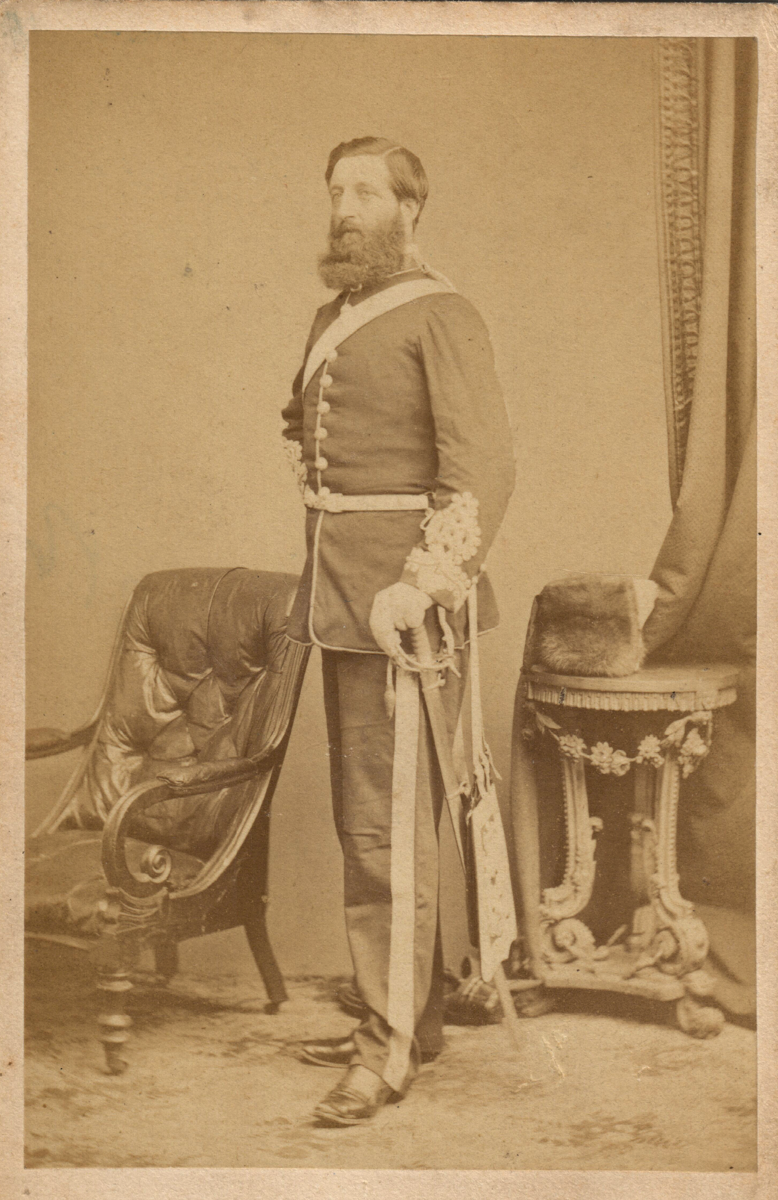
John Blockley
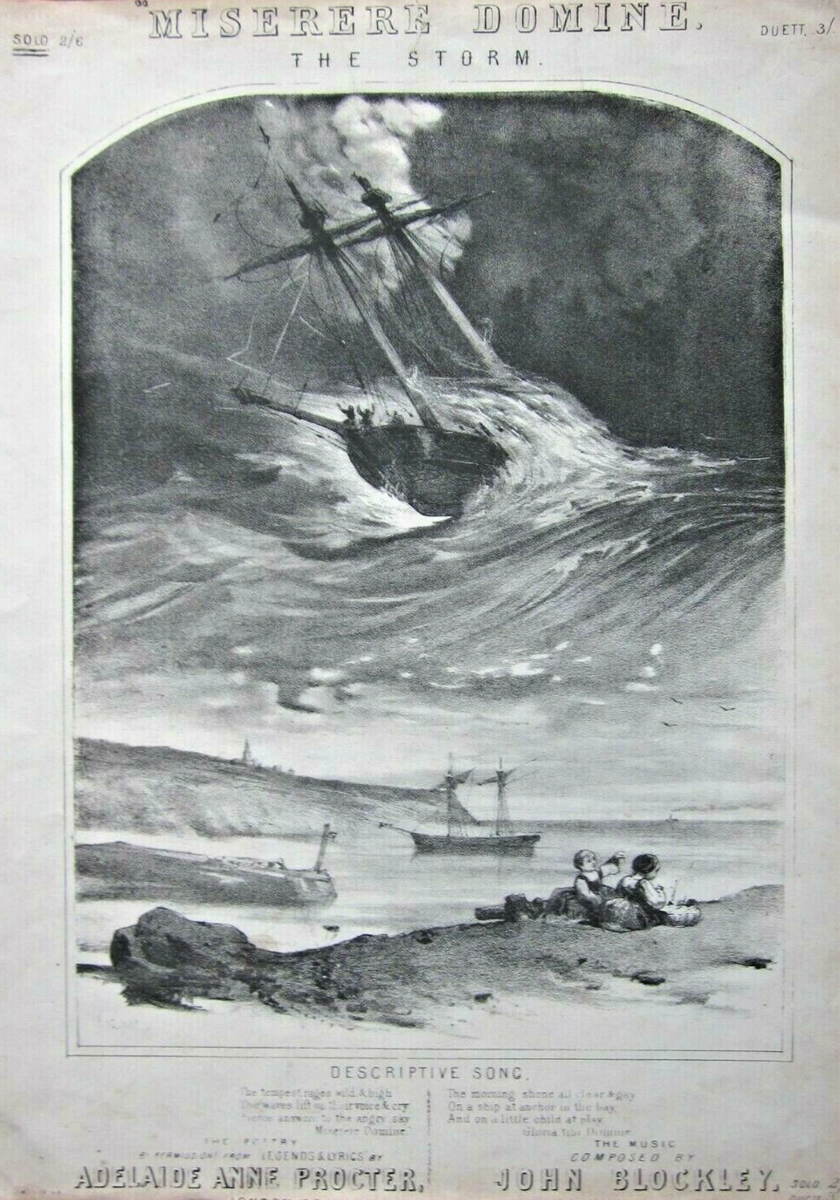
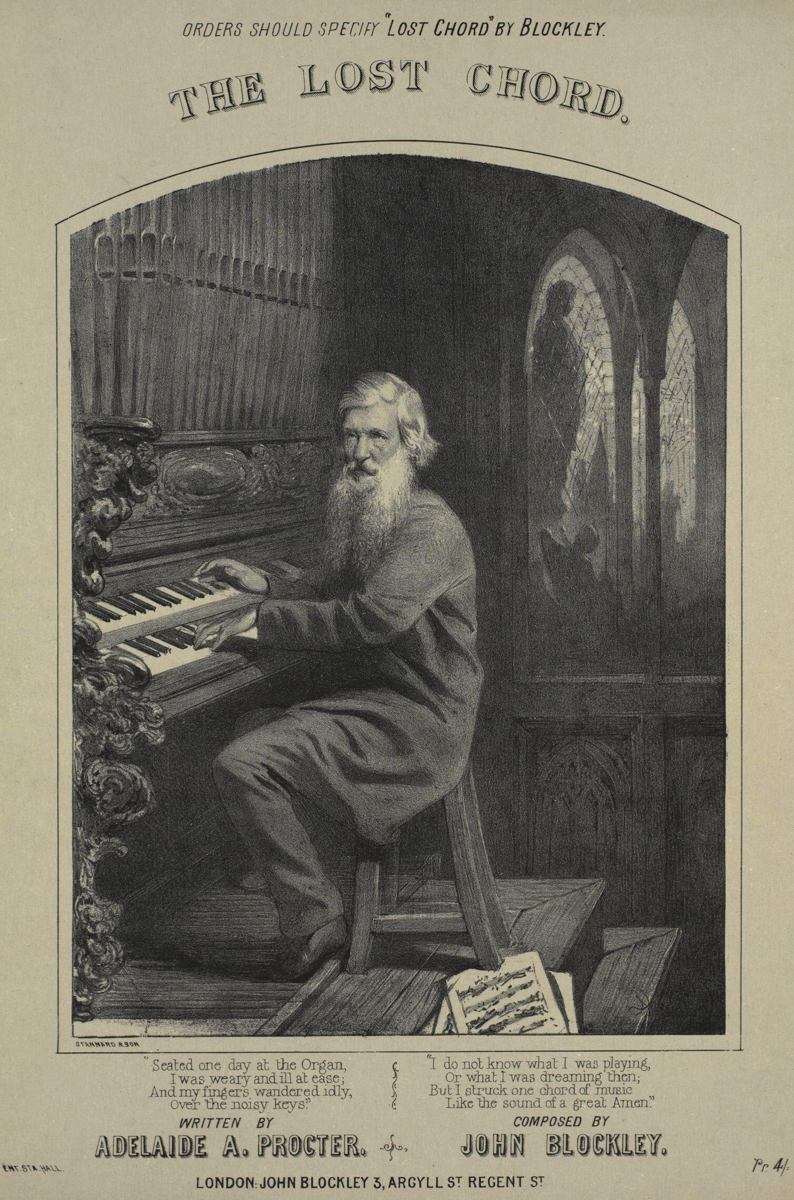
Cover of John Blockley's version [above]
The Victoria and Albert Museum has the cover only.
The National Library of Australia has cover and music.
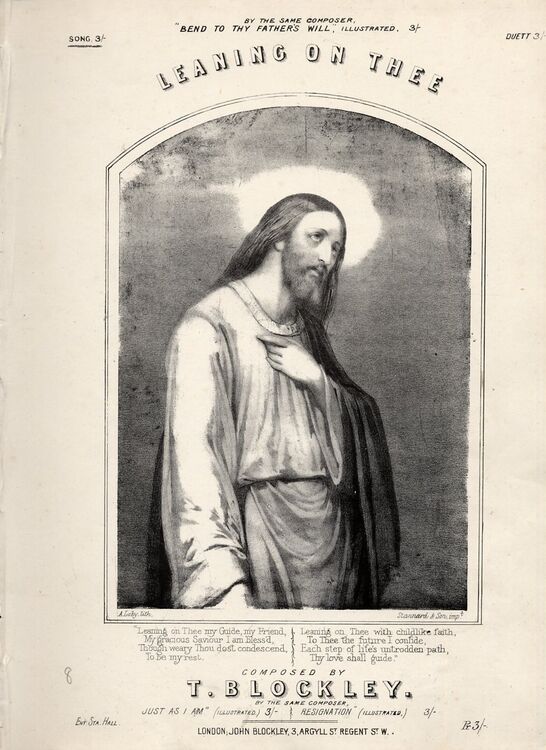
William Marshall Hutchison [below] was born in Scotland in 1854 and died in 1933. He composed under a number of pseudonyms including Julian Mount, Josef Meissler and, possibly, Giulio Montana. The last of these names (spelled Montagna), might very well be translated from Italian into English as Julian Mount. In 1878 Hutchison’s Lost chord was published under the name Julian Mount, and in 1885 republished under his real name. But in 1874 a different setting of the poem was published by “Giulio Montana” (wan Italian version of Julian Mount!), and since this person seems not to have existed, it seems more than likely that this was an earlier attempt at a setting.
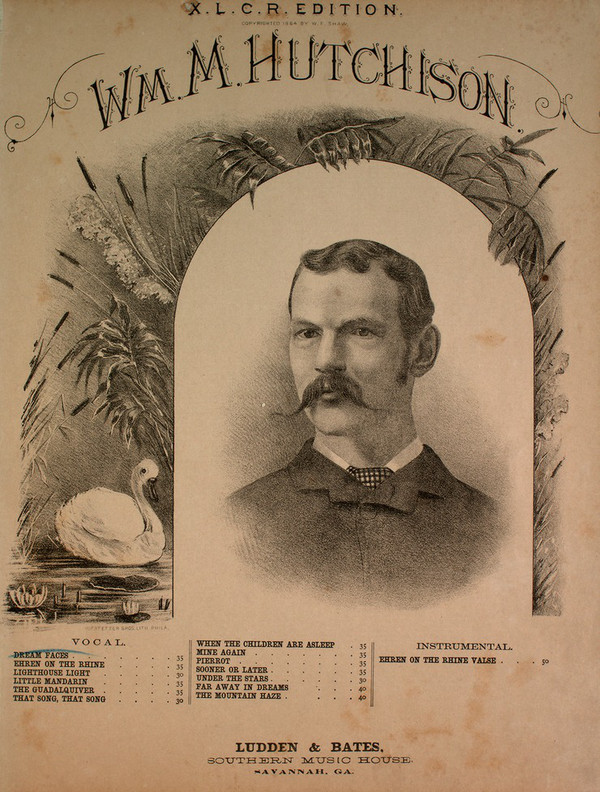
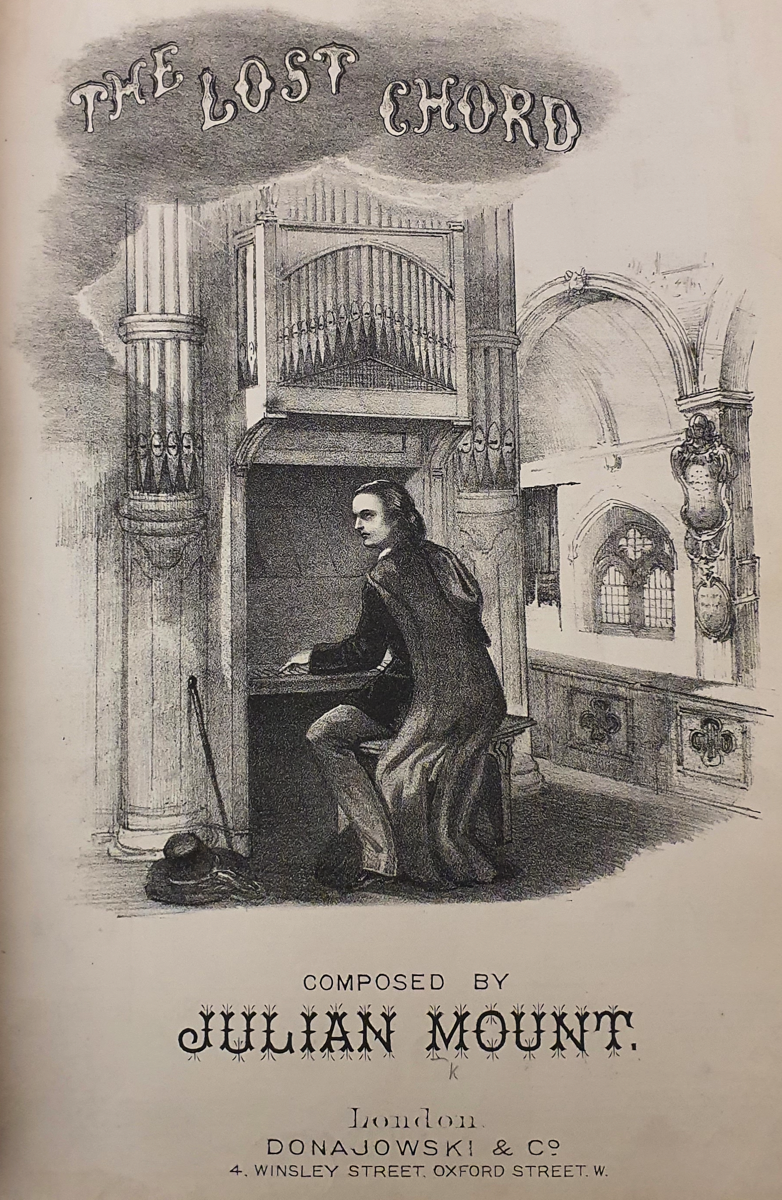
Cover of William Hutchison's version [above]
originally published under the name "Julian Mount",
later published under his own name.
William (Wilhelm) Herz was born in Prussia in 1828. He emigrated to the USA and lived in Mobile, Alabama where he worked as a music teacher. There, in 1860, he married Mary (Marie) Betencourt (born 1840 or 1842 in Alabama. They had 3 daughters and 4 sons. His setting of The Lost Chord was first published in 1861 by J.H.Snow and dedicated to Mrs Mary L.Snow. It was probably the first time the poem had been set to music. Herz died in 1879, and his wife in 1893. Other pieces by Herz, with titles including “Jefferson Davis Grand March” (see image) and “Southern Victory Polka March" (both also published by J.H.Snow in 1861), either demonstrate his support for the Confederate cause during the American Civil War or, at least, his willingness to compose to order for a cause that as a foreigner he may not have fully understood.
Herz, Wm. Jefferson Davis grand march.
Published: J. H. Snow, Mobile, 1861
Library of Congress
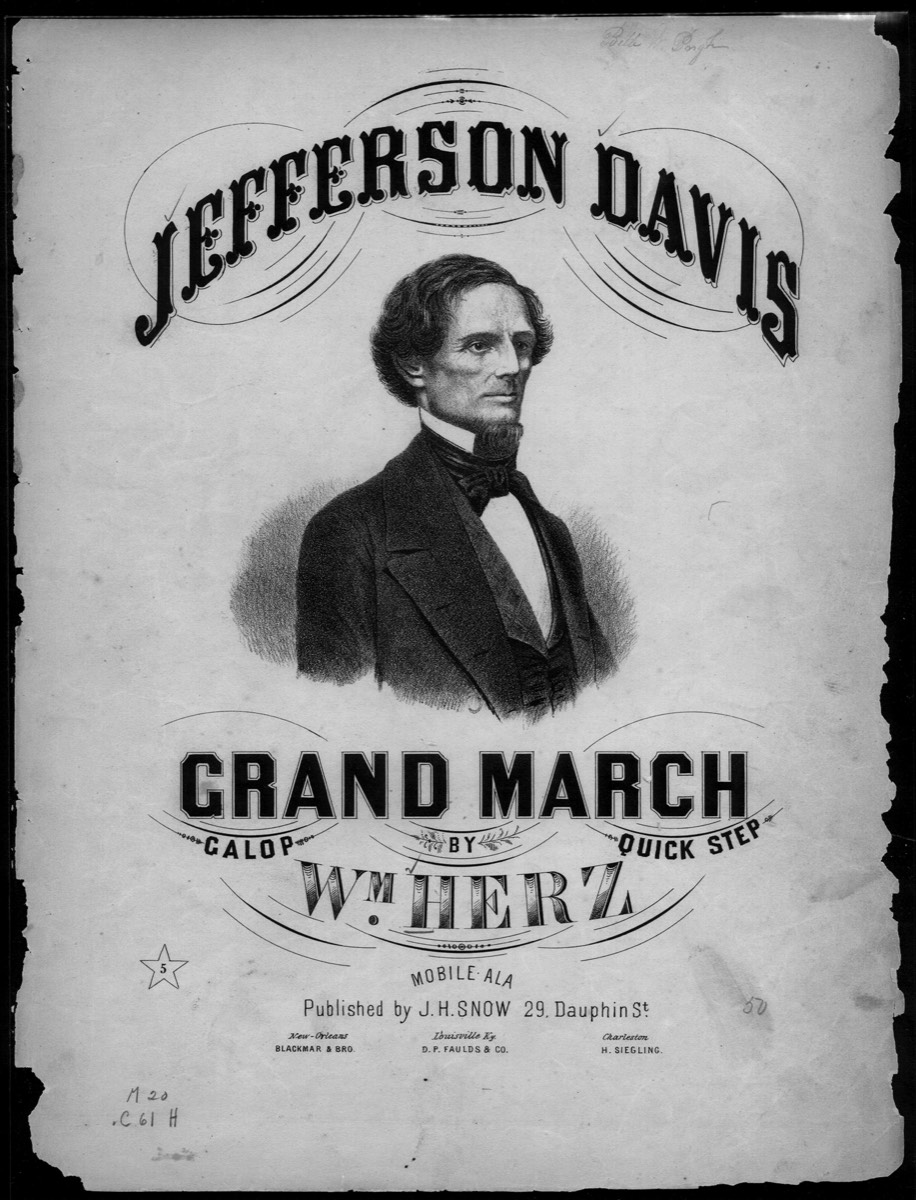
“Rita” Eliza Margaret Jane Humphreys/Booth née Gollan a.k.a. Mrs.W.Desmond Humphreys (1850-1938)
Eliza Humphreys was an author born in Inverness-shire who wrote several novels under the pen-name "Rita". Her first husband was composer Karl Edmund Otto von Booth (1842-1923), and though in her autobiography she wrote about this unhappy marriage, he may have encouraged her to compose music and make arrangements, some of which were published. (Her autobiography makes no mention of writing music; Booth published under his own name.) They had three sons. In 1893 Booth divorced her citing adultery with one William Humphreys whom she had known for some time. She was, in fact, already pregnant with Humphreys' child (a daughter). After the divorce she married Humphreys and then became known as Mrs.W.Desmond Humphreys. Her new husband was also a musician, but may not have known her early enough to have influenced her musical writings. As for her setting of The Lost Chord, despite the advertisement of the piece by publisher Moutrie & Son which stated "Rita has … skilfully adapted Adelaide Proctor's [sic] beautiful poem …", it is a problematic work. While some may cringe at the use of Beethoven's themes, the quality of the originals cannot be disputed. However, the published copy of the song contains not only many obvious printing errors but also some idiosyncratic choices, and it is hard to decide if some of these were also printing errors or examples of incompetent musicianship.
Image: © National Portrait Gallery, London
Eliza Humphreys was an author born in Inverness-shire who wrote several novels under the pen-name "Rita". Her first husband was composer Karl Edmund Otto von Booth (1842-1923), and though in her autobiography she wrote about this unhappy marriage, he may have encouraged her to compose music and make arrangements, some of which were published. (Her autobiography makes no mention of writing music; Booth published under his own name.) They had three sons. In 1893 Booth divorced her citing adultery with one William Humphreys whom she had known for some time. She was, in fact, already pregnant with Humphreys' child (a daughter). After the divorce she married Humphreys and then became known as Mrs.W.Desmond Humphreys. Her new husband was also a musician, but may not have known her early enough to have influenced her musical writings. As for her setting of The Lost Chord, despite the advertisement of the piece by publisher Moutrie & Son which stated "Rita has … skilfully adapted Adelaide Proctor's [sic] beautiful poem …", it is a problematic work. While some may cringe at the use of Beethoven's themes, the quality of the originals cannot be disputed. However, the published copy of the song contains not only many obvious printing errors but also some idiosyncratic choices, and it is hard to decide if some of these were also printing errors or examples of incompetent musicianship.
Image: © National Portrait Gallery, London
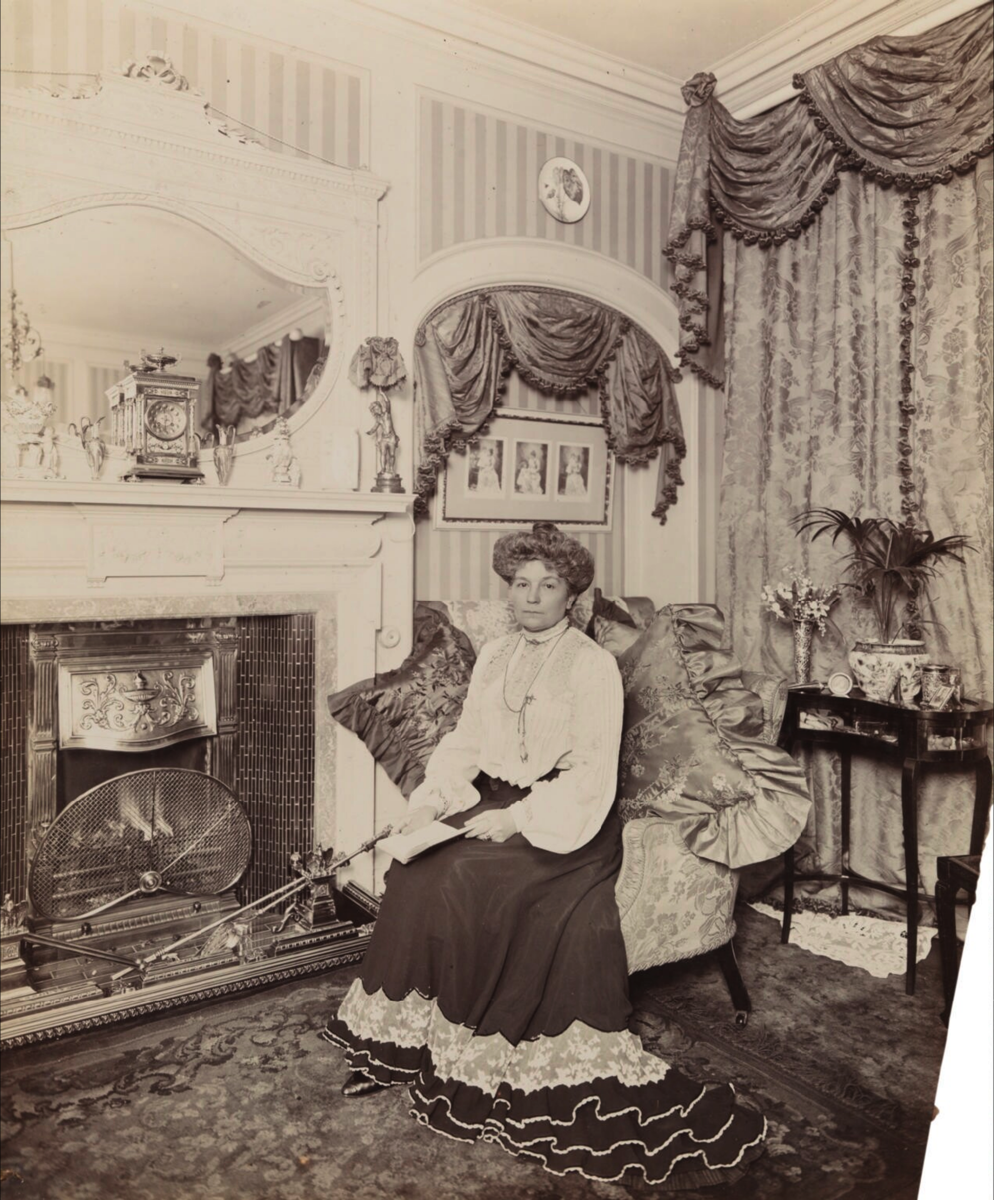
Frank (Francis) Romer (1810-1889) was the brother of soprano Emma Romer (1814-1868). He was a composer and singing teacher who became professor of singing at Trinity College of Music, London, and wrote a treatise on singing. For a while he taught singing to Rosina Brandram, later famous as the creator of a number of contralto roles in Gilbert and Sullivan operas. Romer wrote and arranged music for his sister, including a rescoring of Bellini's La Sonnambula in 1833. His own operas include The Pacha's Bride (1836) and Fridolin (1841). Though the first newspaper mention of his setting of The Lost Chord dates from February 1879, there is an earlier mention (May 1878) of a setting being sung by a Miss Romer, though this cannot be his sister Emma as she was no longer living, and it is impossible, in any case, to be certain which setting this other Miss Romer sang.
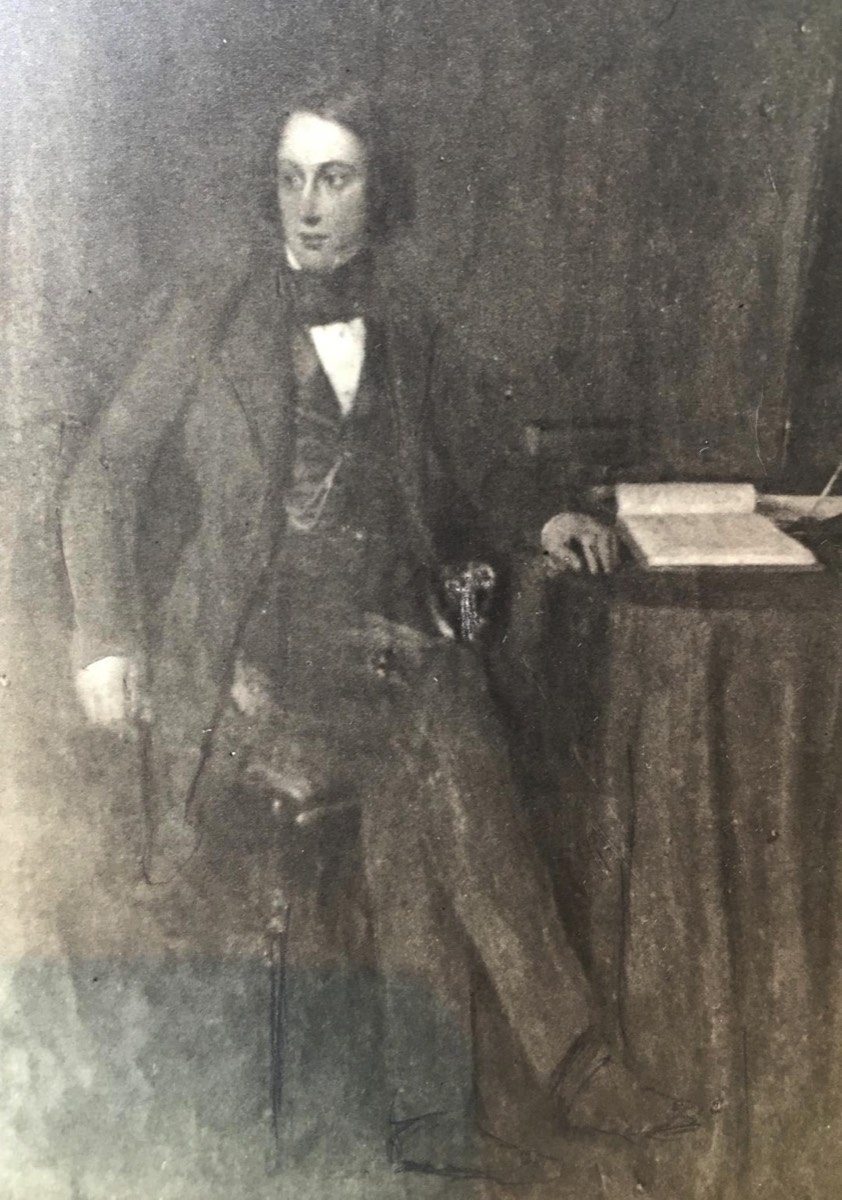
Enos Bacon (1874-1951) — self-styled "Yorkshire Nightingale" (photographed in 1910). He began working life as a miner before becoming a composer, elocutionist and singer. His eccentric performances were well-received in England and Australia. When singing, he specialised in using a rich baritone voice as well as a high falsetto, sometimes alternating rapidly between the two.
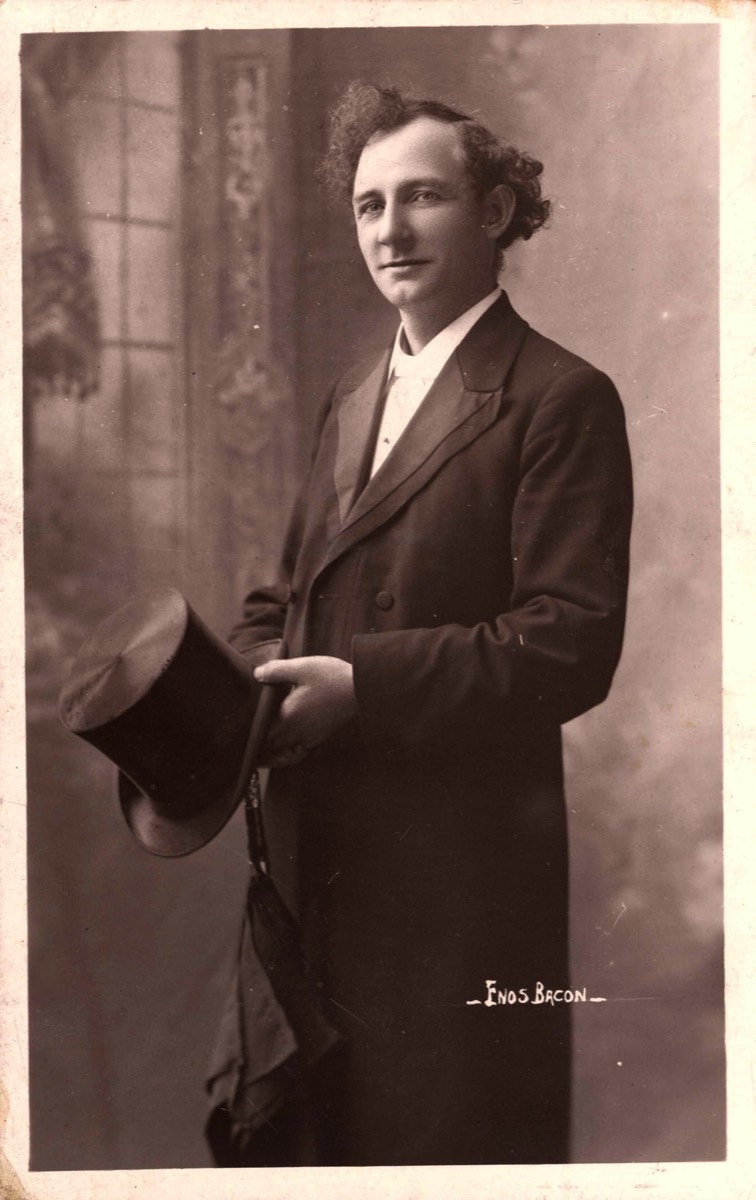
Ezra Read (1862-1922) was a prolific composer of tuneful piano pieces and educational music. His wife Ida Hampden also composed piano music. Read's piano pieces include Dreyfus—A Reverie. An image of the cover of that piece is included here as this author has spent some time researching the infamous Dreyfus Affair, one of the most notorious cases of miscarriage of justice in history. Information about the opera Dreyfus: Prisoner of Devil's Island can be found here.
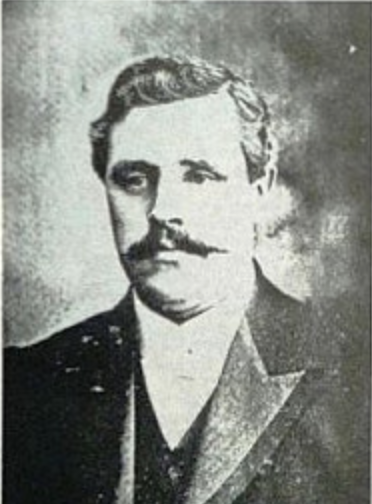
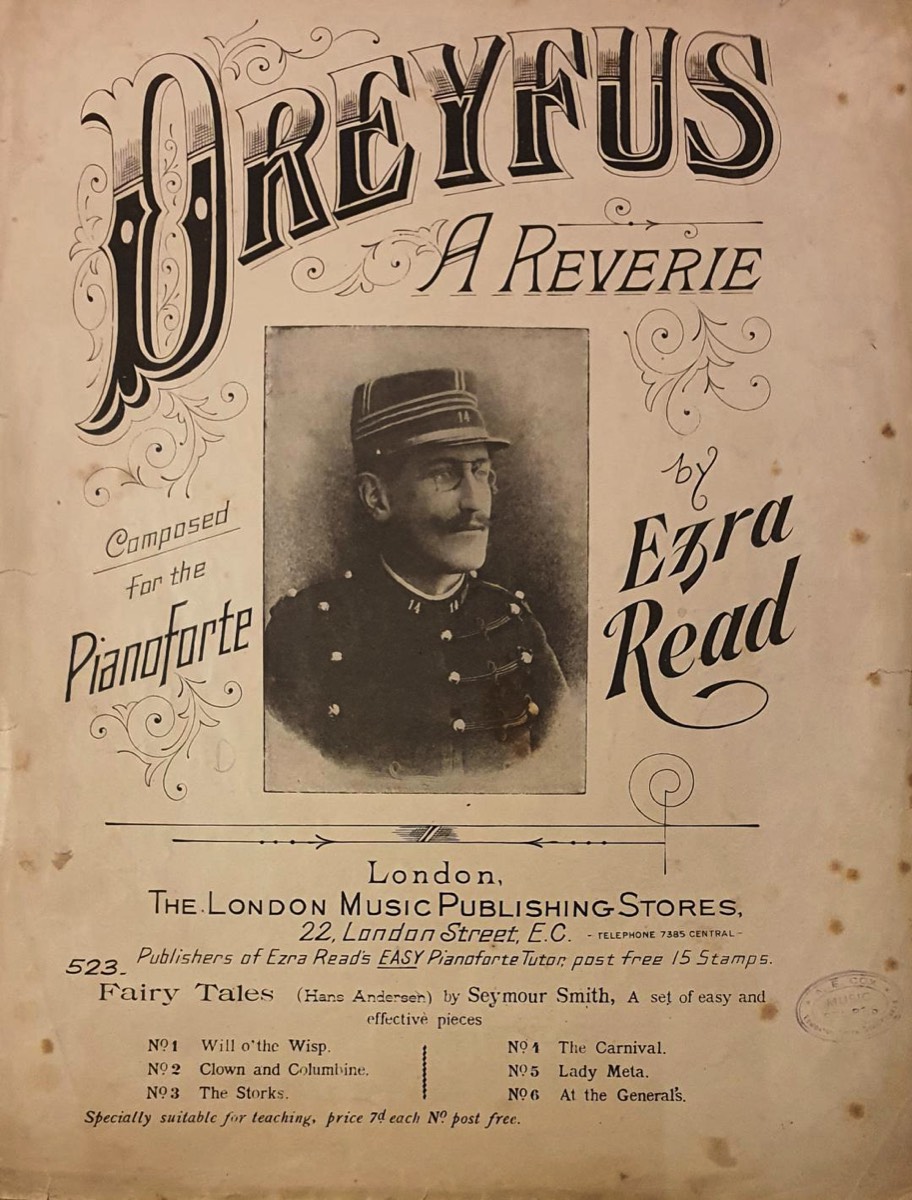
Joseph Robinson (1816-1898) was an Irish composer, born in Dublin. In 1848, he was one of the founders of the Royal Irish Academy of Music where he taught singing. His setting of The Lost Chord was made in 1864, and the music was considered pleasing by critics, though a reviewer in the Musical Standard from 1865 evidently found the poem itself to be laughable. There are some very pleasing moments in the song, though it is curiously unsatisfying, perhaps because Robinson chose not to set Procter’s poem in its entirety, missing out, as he does, the fourth and fifth stanzas. He is one of three composers who changes “infinite calm” to “holy calm”. This textual change, as with others, has been retained in the recording, though the attempt to create a more religious feeling may seem strange.
Annie (Anne) Elizabeth Armstrong was born in London in 1853 and died in 1898. Her version of The Lost Chord dates from 1885. She evidently tried to outdo Sullivan by making her music even more dramatic than that of his setting. Unfortunately, this leads to some muddy writing in the piano part. She wrote a number of songs. Her sister, Catharine Armstrong (1847-1898), to whom she dedicated her Lost Chord setting, was also a composer. Other sisters were singer Eleanor Armstrong (1839-1896), writer Jessie (Jessica) Fearon Armstrong (1845-1938), and Harriet Armstrong (1843-1925). She should not be confused with novelist Annie Emma Armstrong a.k.a Mrs Challice (1821-1875).
Carl Bernstein has proved hard to track down. It may have been a pen name — or perhaps he was the Carl Bernstein (c.1835-1899) who, together with his brothers Adolph and August (all three musicians) left Germany in 1854 for Hull, UK. From there Adolph and Carl, at least, travelled on to the USA. Adolph was born in 1835 and Carl sometime between 1834 and 1836. Both continued to work as musicians, Adolph founded the successful Bernstein's Orchestra and in 1875 became a US citizen. Carl, who sometimes called himself Charles, married and had 6 children. In 1899 he was found drowned in the Kill van Kull, the tidal strait between Staten Island, NY, and Bayonne, NJ, near the Orford Copper and Sulphur Company's wharves at Constable Hook. Foul play was suspected. His body was identified by a son and daughter. Did this Carl make a setting of A Lost Chord? I can find no one else who fits. The music was published by Charles Sheard, Musical Bouquet Office, (London) who published music by both English and American composers.
Hubert Watkyn was evidently a nom de plume. There is no way or knowing if this person was male or female, however, there seems to have been no one living when this version of the Lost Chord was published with that name attached, and though Watkyn is known to have written other pieces, the published sheet music offers no clue.
Sir George Alexander Macfarren (1813-1887) was born in London and became a distinguished composer of operas and orchestral music He conducted opera at Covent Garden from 1845 and became Principal of the Royal Academy of Music in 1876. Macfarren had very poor eyesight from his childhood, and despite treatment his sight continued to deteriorate. He became totally blind in 1860, but continued to compose with the aid of an amanuensis. His setting of The Lost Chord was made in 1865.
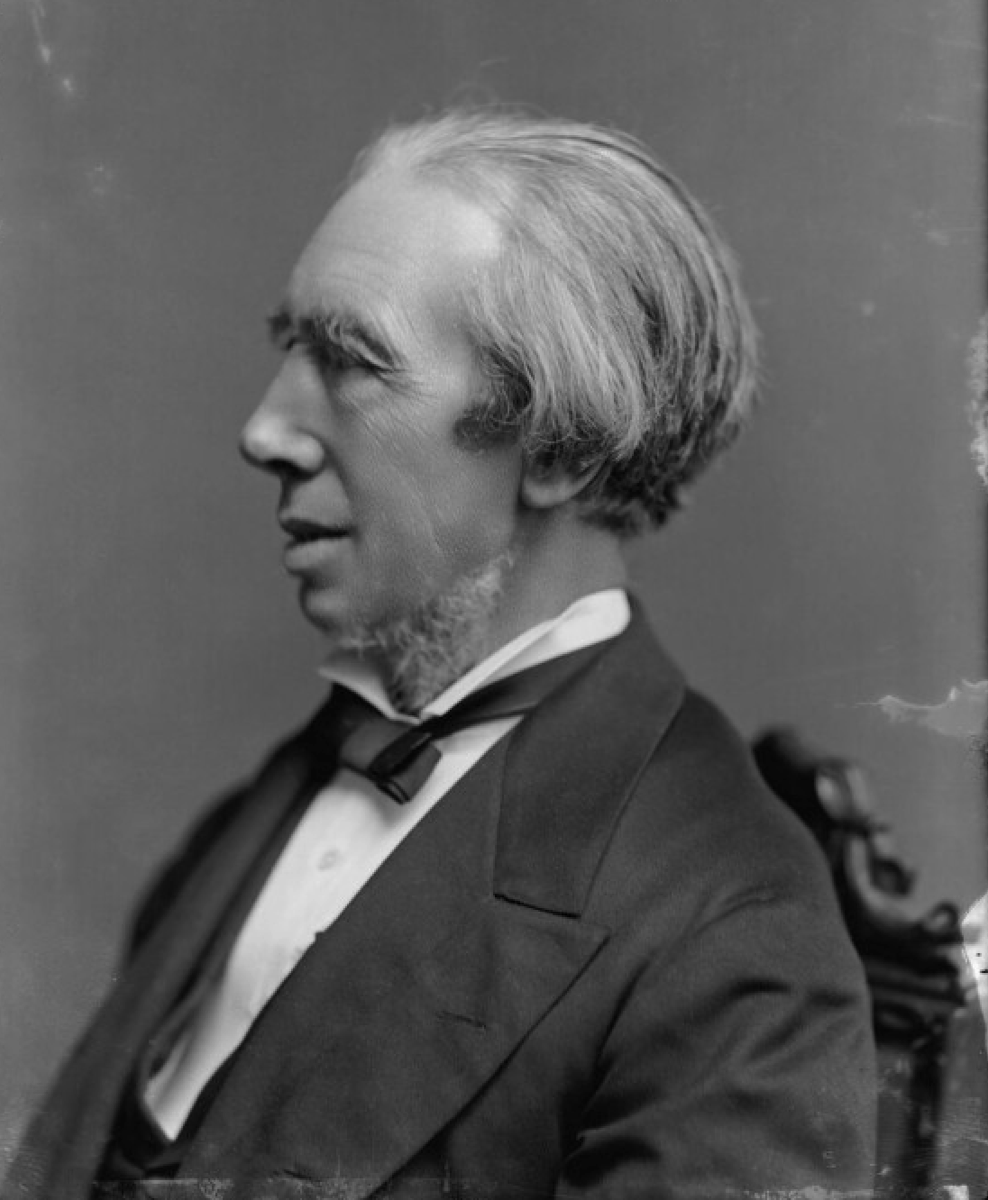
Alfred James Caldicott (1842-1897) was best known as a composer of light music, composing a number of humorous songs and glees. He was born in Worcester, studied music at Leipzig, then at Trinity College of Music, London, and eventually became Principal of the London College of Music. He wrote a number of operettas for the German Reed Gallery of Illustration as well as some cantatas. His setting of The Lost Chord was published in The Lute of 15 January 1883.
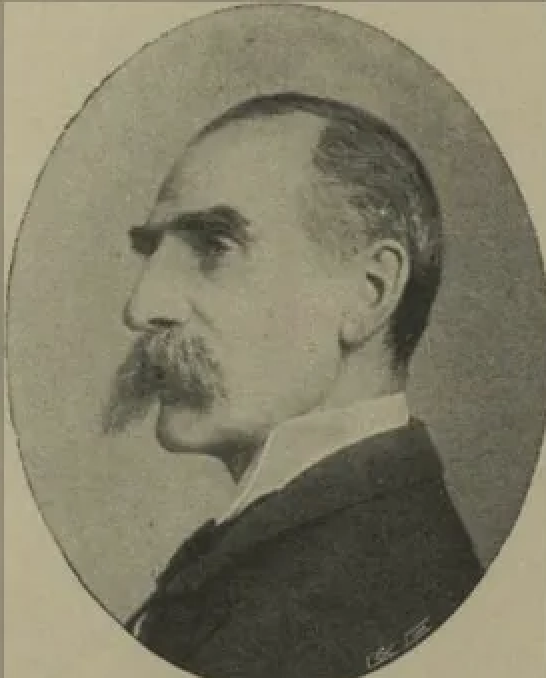
Anne Hall's setting of The Lost Chord was originally published in 1870, seven years before Sullivan's famous setting, the composer Anne Hall has not been identified. She was apparently the pupil of William Thomas Wrighton (1816-1880), who described himself as a Professor of Singing, and the song is dedicated to him. He was fairly well known as a composer of songs, and the National Portrait Gallery has a picture of him. Anne Hall's setting is certainly not the strongest entry among other settings, though the Hampshire Post described it in 1883 as a "very beautiful and effective composition". The song was published by Chappell of Bond Street, and was not really up to their usual standard. Anne Hall also wrote a song called "Thy Voice Comes Floating O'er the Sea".
Henry Gordon Thunder (1865-1958) was an American organist, composer and arranger. His arrangement of Sullivan's Lost Chord was made in 1908 for the Schubert Choir of York, Pennsylvania.
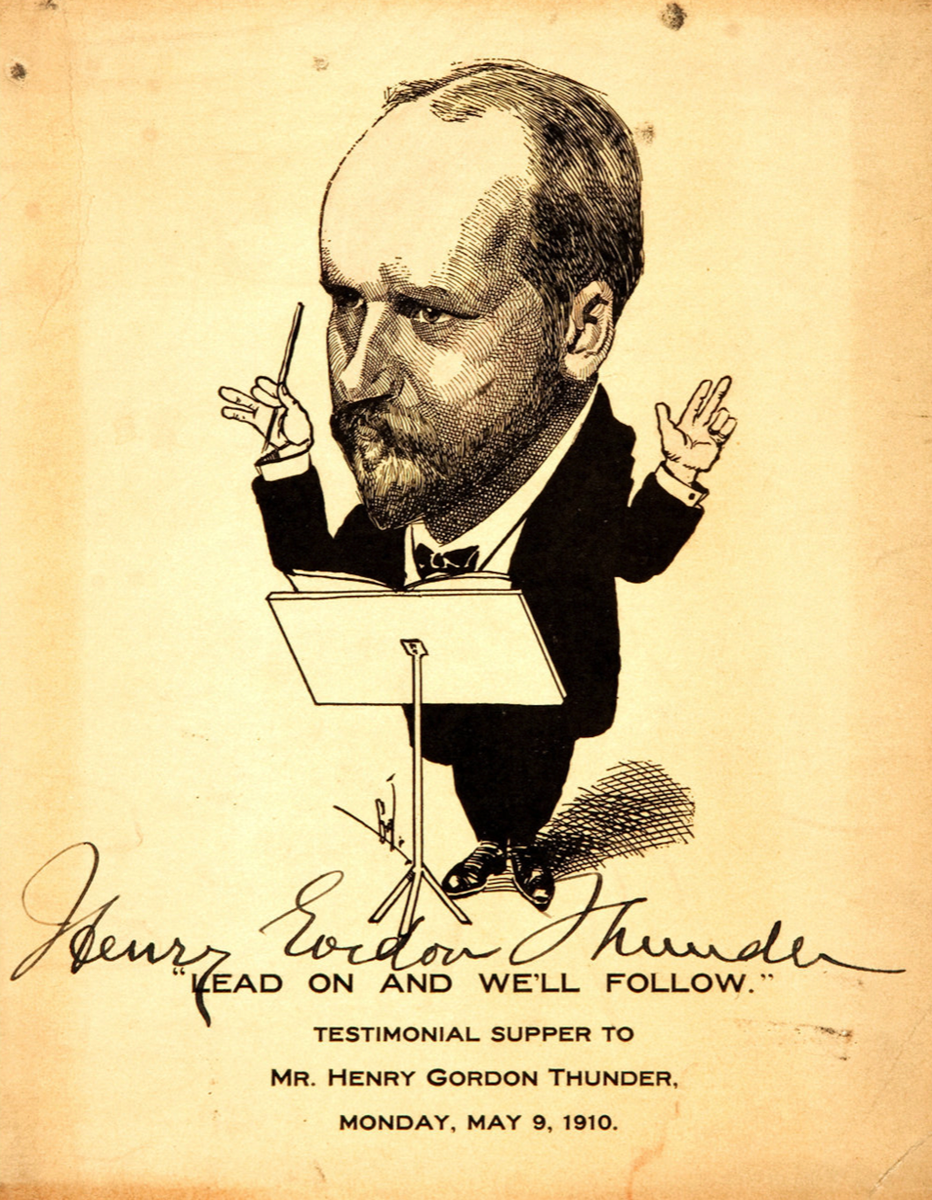
Czech pianist Wilhelm Kuhe (1823-1912) made a piano transcription of Sullivan's Lost Chord in 1880 and published in London by Boosey & Co.


